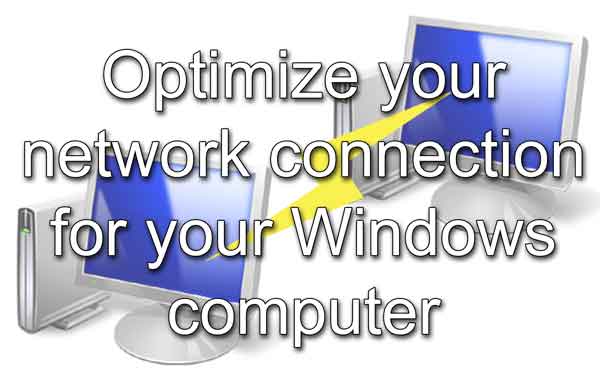Are you having problems with the network connection for your Windows computer? Does your Internet connection seem slow? If so, here are some tips on how to optimize the network connection in your Windows computer.

In today's world, being connected to the Internet is essential for both personal and professional purposes. However, sometimes, the network connection for your Windows computer can be slow or unstable, which can be frustrating and affect your productivity. In this article, we'll explore some tips to optimize the network connection in your Windows computer.
Reset your network adapter
Overtime, the settings for your network adapter can get corrupted. Resetting the network protocols back to factory default will often restore the speed and stability of your network connection. This works for both wired and wireless adapters.
Now, if you have any unique network settings, like a static IP address or preferred DNS servers, you will need to make note of them. Resetting your network adapter(s) will clear all custom settings and return them to out-of-the-box status.
How to reset your network adapter in Windows 11
How to reset your network adapter in Windows 10
Update the drivers for your network adapters
Outdated or corrupted network drivers can cause network connection problems. You will need to download the latest drivers for your network adapter to update your software. And depending on if your computer is custom-built or pre-built, the manufacturer's website will vary.
If your system is pre-built, you must go to the manufacturer's website and search for drivers for your computer model. If your system is custom-built, you must go to the motherboard manufacturer's website and search for your motherboard model.
You can also update your network drivers from the Device Manager. But remember that these drivers will be generic drivers and not the latest version. To do this, right-click on the Start  menu, left-click on Device Manager, left-click on the Network adapters category on expand it, right-click on your network adapter, and select Update driver from the context menu that appears.
menu, left-click on Device Manager, left-click on the Network adapters category on expand it, right-click on your network adapter, and select Update driver from the context menu that appears.
Disable bandwidth-hogging applications
If you have applications running in the background that use a lot of bandwidth, your network connection may be slow or unstable. To check which applications are using the most bandwidth, open the Task Manager by pressing Ctrl + Shift + Esc (all together simultaneously), select the Performance tab, and left-click on Open Resource Monitor. Under the Network tab, you can see which applications are using the most bandwidth. If you find an application that's using a lot of bandwidth and you don't need it, consider disabling it or uninstalling it.
Check your WiFi signal strength
If you connect to your network via a wireless connection, check the WiFi signal strength throughout your home. You might find out that the signal is weak in the areas where you use the network the most. This is where having a smartphone comes in handy.
By installing a WiFi analyzer on your smartphone, you can walk around your home and map the signal strength thought the different rooms. If you find the signal to be weak in a particular area, you can consider moving your WiFi router to another location or getting a WiFi range extender.
Also, if your router or modem is located near other electronics or appliances, they may be causing interference. Consider moving it to a different location or away from other electronics.
Use a wired connection
If possible, use a wired connection instead of WiFi. A wired connection is generally faster and more stable than WiFi, especially if you're transferring large files or streaming video. To connect your computer to your router or modem using a wired connection, plug an Ethernet cable into the Ethernet port on your computer and the Ethernet port on your router or modem.
Optimize your router or modem
Your router or modem may also need some optimization to improve your network connection. Some tips to optimize your router or modem include:
- Updating the firmware: Check the manufacturer's website for firmware updates for your router or modem. Updating the firmware can improve performance and fix security vulnerabilities.
- Changing the channel: If you're experiencing interference from neighboring WiFi networks, changing the channel on your router can help. You can do this in the router's settings.
By following these tips, you can optimize the network connection in your Windows computer and enjoy faster, more stable Internet. Remember to always keep your computer and network equipment up-to-date and secure to avoid network problems.
2a8e01a7-0753-484b-88d5-82077cbb2578|1|5.0|96d5b379-7e1d-4dac-a6ba-1e50db561b04